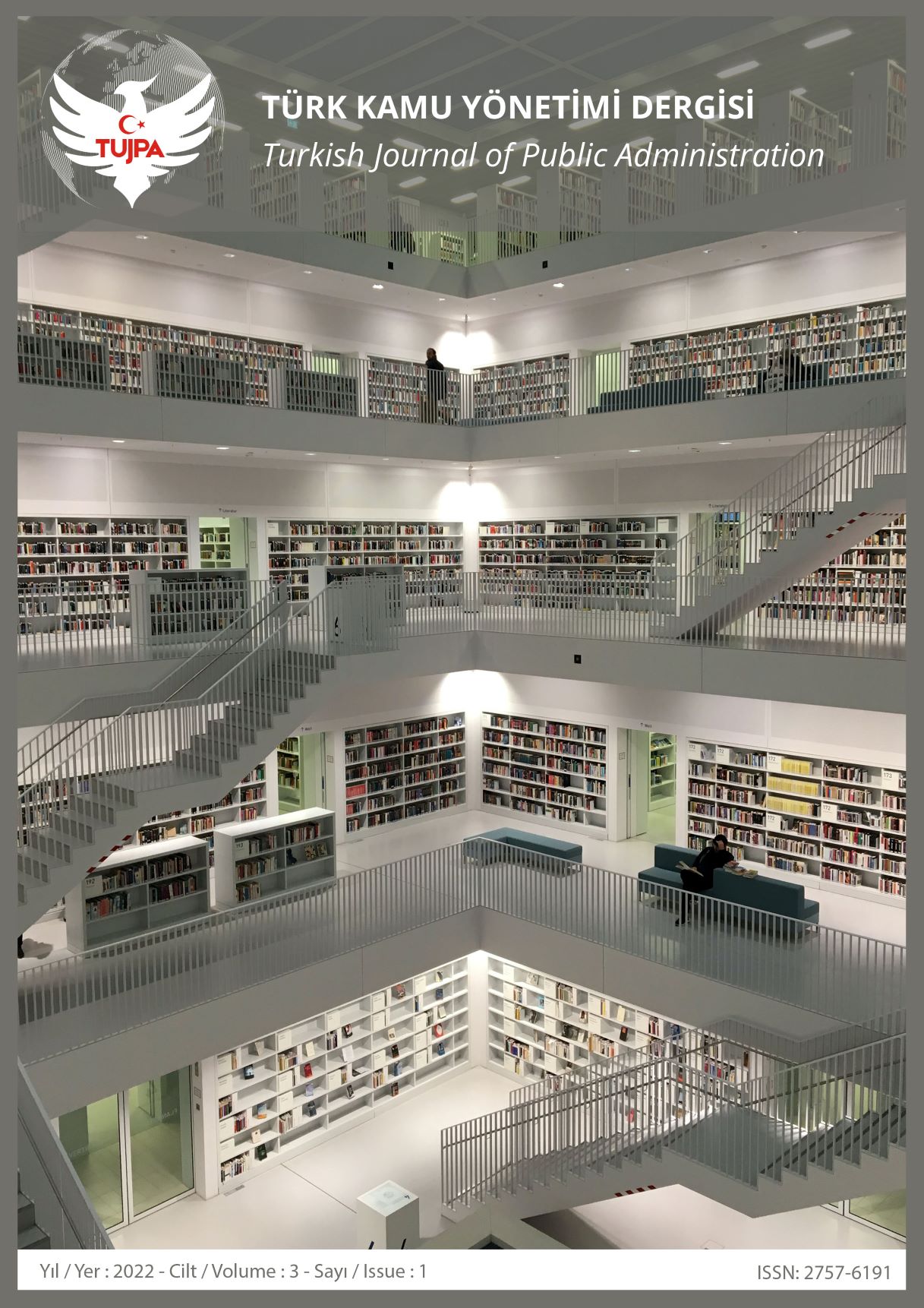Example Gastronomy Tourism Activities In Municipalities In Turkey
Keywords:
Gastronomy, Gastronomy Tourism, Municipalities, Handicrafts, Local DevelopmentAbstract
Gastronomy, which is a multidisciplinary activity, is a significant industry ingredient that contributes to the local economy within the context of tourism activities. It holds an effective tool position in highlighting destinations and recognizing local flavors. The gastronomic identity of the local geography, which is kneaded with history, ethnic differences, culinary rules, common tastes and recipes, is crucial in determining the region as a destination. It has become inevitable to create a sustainable competitive advantage with gastronomic tourism. This study has tried to uncover the status of gastronomic activities, which are claimed to be an efficient factor in increasing the tourism incomes in the reports of the United Nations World Tourism Organization, at the level of municipalities and their contribution to urban tourism. In the study, primarily a literature review was conducted, and answers were sought to the research questions by using the semi-structured interview method. Based on the data, the gastronomic activities of 81 municipalities at different scales and their contribution to urban tourism have been analyzed. In the light of the findings, it was concluded that municipalities sustain local tastes with cooking courses, local flavors gained a worldwide reputation with the publication of cookbooks by some municipalities, geographical indication products are registered by many municipalities, the handicrafts, which are such as to complementary to gastronomy tourism, have become prevalent with vocational courses opened in municipalities and all these activities contribute to the local economy to a certain extent.
Downloads
References
Akkaya, Ayşenur, Ceyhun Can Özcan, (2019)” Türkiye’de Gastronomi Turizminin Ekonomik Etkilerinin İndeks Değerlendirmesi” Journal Of Social And Humanities Sciences Research, Vol: 6, No:32.
Beşirli, Hayati, “Yemek, Kültür ve Kimlik”, https://www.millifolklor.com/PdfViewer.aspx?Sayi=87&Sayfa=156, (Erişim Tarihi: 16.03.2021).
Bonow, Madeleine, Paulina Rytkönen (2012), “Gastronomy And Tourısm As A Regıonal Development Tool – The Case Of Jämtland” Advances in Food, Hospitality and Tourism, Vol: 2, No:1.
Coğrafi İşaretler, www.ci.gov.tr, (Erişim Tarihi: 10.04.2021)
Cömert, Menekşe ve Fügen Durlu Özkaya (2014), “Gastronomi Turizminde Türk Mutfağının Önemi” Journal of Tourism and Gastronomy Studies, Cilt 2, Sayı 2.
Çalışkan, Osman (2013), “Gastronomic Identity in Terms of Destination Competitiveness and Travel Motivation”, Journal of Tourism and Gastronomy Studies, Cilt: 01, Yıl:1.
Çevik, Samet ve Melahat Yıldırım Saçılık (2011), Destinasyonun Rekabet Avantajı Elde Etmesinde Gastronomi Turizminin Rolü: Erdek Örneği, 12. Ulusal Turizm Kongresi Bildiriler Kitabı, https://www.researchgate.net/publication/313652067_Destinasyonun_Rekabet_Avantaji_Elde_Etmesinde_Gastronomi_Turizminin_Rolu_Erdek_Ornegihttp://www.researchgate.net/, (Erişim Tarihi: 16.03.2021).
Danhi, Robert (2003), What is your country’s culinary identity? Culinology Currents, Winter.
David Hillel, Yaniv Belhassen, Amir Shani (2012), “What makes a gastronomic destination attractive? Evidence from the Israeli Negev”, Tourism Management, Vol. 2013, No.36, 2012, s. 209
Dünya Turizm Örgütü, https://www.unwto.org/sustainable-development/reports-oneplanet-stp (Erişim Tarihi: 10.04.2021)
Etimolojik Anlam, https://www.etymonline.com/search?q=GASTRONOMY, (Erişim Tarihi: 11.03.2021).
Eusabia B. Ondieki , Esther J. Kotut , Caroline K. Gatobu , Elizabeth M. Wambari (2017), “Gastronomic Identity: Role of the Environment and Culture on Culinary Tourism” African Journal of Tourism, Hospitality and Leisure Studies, Vol. 3 (1).
Fields, Kevin Ed. Anne-Mette Hjalager, Greg Richards (2002), “Demand fort he Gastronomy Tourism Product: Motivational Factors” in Tourism and Gastronomy, New York.
Gastronomi,https://www.oed.com/view/Entry/77032?redirectedFrom=gastronomy&, (Erişim Tarihi: 11.03.2021).
Greg Richards, “The Role of Gastronomy in Tourism Development” https://d1wqtxts1xzle7.cloudfront.net/, (Erişim Tarihi: 22.03.2021).
Jaksa Kivela, John C. Crotts (2005), “Gastronomy Tourism: A Meaningful Travel Market Segment” Journal of Culinary Science & Technology, Vol. 4 (2-3), s.39-40.
Joan C. Henderson (2009), “Food Tourism Reviewed” British Food Journal, Vol. 111 No. 4, Emerald Group Publishing Limited.
Kivela, Jaksa ve John C. Crotts (2006), “Tourism and Gastronomy’s Influence on How Tourists Experience a Destination” Journal of Hospitality & Tourism Research, Vol: 30, No:3.
Martins, Marco (2016), “Gastronomic Tourism and the Creative Economy” Journal of Tourism, Heritage & Services Marketing, Vol: 2, No:2.
McKercher, B, Fevzi Okumus ve Bendegul Okumus (2008), “Food Tourism as a Viable Market Segment: It’s all how you cook the numbers” Journal of Travel & Tourism Marketing, Cilt 25, Sayı 2.
Menekşe Cömert ve Fügen Durlu Özkaya (2014),“Gastronomi Turizminde Türk Mutfağının Önemi”, Journal of Tourism and Gastronomy Studies, Cilt: 02, Yıl:2.
Montagne, Prosper, Charlotte Turgeon (1977), Gastronome, The New Larousse Gastronomique, New York: Crown Publishers, s.364.
N. Ebru Karabağ Aydeniz, Sergio Taddonio, “Adaptive Reuse” Of Industrial Heritage For “The Experience Economy” Purpose In Historical City Center Of Ayvalık; Preservation Of An Old Olive Oil Factory As A Gastronomy Center”, Environment and Architecture, www.researchgate.net, (Erişim Tarihi:22.03.2021).
OECD (2014), “Tourism and the Creative Economy”, OECD Studies on Tourism, OECD Publishing.
Ondieki Eusabi B., Esther J. Kotut, Caroline K. Gatobu, Elizabeth M. Wambari (2017), Gastronomic Identity: Role of the Environment and Culture on Culinary Tourism, http://onlinesciencejournals.com/index.php/ajthls/index 1, s.20. (Erişim Tarihi: 16.03.2021).
Richards, Greg (2002), “Gastronomy: An Essential Ingredient in Tourism Production and Consumption?”, A.M. Hjalager, ve G. Richards, (Ed.), Tourism and Gastronomy, London, Routledge.
Rosario Scarpato, “Gastronomy as a tourist product: The perspective of Gastronomy Studies” www.academia.edu, s.104, (Erişim Tarihi: 31.03.2021).
Sandra Marıa Sanchez-Canizares, Toma´s Lopez-Guzman (2012), “Gastronomy As A Tourism Resource: Profile Of The Culinary Tourist” Current Issues in Tourism, Vol. 15, No. 3, s.229-242-243.
Sarıışık, Mehmet ve Gülçin Özbay (2015), “Gastronomi Turizmi Üzerine Bir Literatür İncelemesi” Turizm Araştırmaları Dergisi, Cilt 26, Sayı 2.
Scarpato, Rosario (2021), Gastronomy as a tourist product: The perspective of gastronomy studies, https://www.academia.edu/2496734/Gastronomy_as_a_tourist_product_The_perspective_of_gastronomy_studies , (Erişim Tarihi: 12.03.2021).
Şahin, Güven (2013), “Coğrafi İşaretlerin Önemi ve Vize (Kırklareli)’nin Coğrafi İşaretleri” Pamukkale Üniversitesi Sosyal Bilimler Enstitüsü Dergisi, Sayı:15.
Turizm Şurası, https://turizmsurasi.ktb.gov.tr/TR-204586/gastronomi-turizmi-komisyonu-sonuc-raporu.html, (Erişim Tarihi: 10.04.2021)
UNESCO Yaratıcı Şehirler Ağı, https://www.unesco.org.tr/Pages/88/129/UNESCO-Yarat%C4%B1c%C4%B1-S%CC%A7ehirler-Ag%CC%86%C4%B1 , (Erişim Tarihi: 31.03.2021).
UNESCO Yaratıcı Şehirler Ağı, https://www.unesco.org.tr/Pages/88/129/UNESCO-Yarat%C4%B1c%C4%B1-S%CC%A7ehirler-Ag%CC%86%C4%B1 , (Erişim Tarihi: 29.06.2022).





